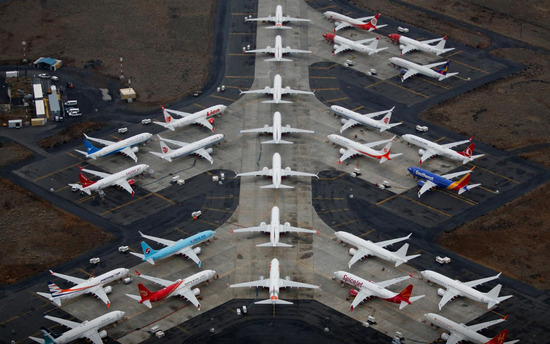January 27th, the European Aviation Safety Agency (EASA) announced on its official website that it had officially approved the re-operation of the modified Boeing 737MAX, which required software upgrades, electrical line modifications, maintenance inspections, operation manual updates and crew training.
Patrick Ky, executive director of EASA, said: “This is an important milestone. Based on the comprehensive analysis of EASA, we determined that the 737MAX can be safely re-used.
This assessment was conducted in a completely independent case relative to Boeing or the FAA, and was not subject to any economic or political pressure.
During the aircraft verification process), we raised some difficult problems until we got the answer and sought solutions that could meet our strict safety requirements. We have conducted flight testing and simulator courses independently, and do not rely on others to do this for us.”
He added: “I am very clear that this work will not end here. We are confident in the safety of the aircraft, which is the prerequisite for our approval. However, as the aircraft resumes service, we will continue to closely monitor the operation of the 737 MAX.
At the same time, at our insistence, Boeing is also committed to further enhancing the performance of the aircraft in the medium term to achieve higher safety levels.
According to the European Aviation Safety Agency, the agency has reached an agreement with Boeing that Boeing will further improve the adaptability of the aircraft system to AoA sensor failures, thus further improving the safety of the aircraft.
Boeing will also conduct a human factor assessment of its crew alarm system in the next 12 months, with a view to identifying needs for long-term improvement.
It should be noted that due to the requirements of the European Aviation Safety Agency’s airworthiness directive for aircraft modification and maintenance, it may take some time to actually resume service for the 737MAX in the region.
In addition, the coronavirus epidemic may also affect the speed of 737MAX’s return to commercial operations.
Along with the Airworthiness Directive, EASA also issued a Safety Directive that requires non-European airlines with EASA Third Country Operators (TCO) authorization to implement equivalence requirements, including crew training.
The European Aviation Safety Agency said that in the past 20 months, EASA has worked closely with regulators in Canada, Brazil, the United States and Boeing to safely resume 737MAX operations.
The three authorities have now approved the aircraft to resume service.
The airworthiness directive issued by the European Aviation Safety Agency requires the same physical changes to aircraft as the Federal Aviation Administration of the United States, but in two places.
First, the European Aviation Safety Agency explicitly allows the crew to intervene manually to prevent the rocker vibrator from continuing to vibrate once it is wrongly activated by the system. To prevent distractions from the pilot;
second is that certain types of high-precision landings cannot be performed at present, which are expected to be short-term restrictions. In addition, the authorized training of pilots by the authorities of the two sides is roughly the same.
In response to the lifting of the ban issued by the European Aviation Safety Agency, Boeing said that we will never forget the lives lost in two tragic accidents.
These events and the lessons we learned reshape the company and further focus our attention on the core values of safety, quality and integrity.
We will continue to work with EAA and its member states, other global regulators, and our customers to safely restore the 737-8 and 737-9 to operations safely and globally.
On the evening of January 27, Beijing time, Boeing released its fourth quarter and full-year financial report for 2020.
According to the financial report, in the fourth quarter of 2020, Boeing achieved revenue of $15.304 billion, down 15% year-on-year (compared with the same period last year); a net loss of $8.439 billion, compared with a net loss of $1.01 billion in the same period last year.
For the full year of 2020, Boeing achieved revenue of $58,158 billion, a year-on-year decrease of 24%; a net loss of $11.941 billion, compared with a net loss of $636 million in the same period last year.
Boeing said that the 737MAX has begun to receive regulatory approval for operation and resume delivery.
The 737MAX is currently relatively low in production, and it is expected to gradually increase production to 31 units per month by early 2022, and will further gradually increase production according to market demand.
Boeing has delivered more than 40 737 MAX aircraft since the FAA approved the resumption of operations, and five airlines have been safe as of January 25, 2021, Boeing President and CEO David Calhoun revealed The fleet was resumed and more than 2,700 commercial flight flights were conducted, with a cumulative total of about 5,500 flight hours.



